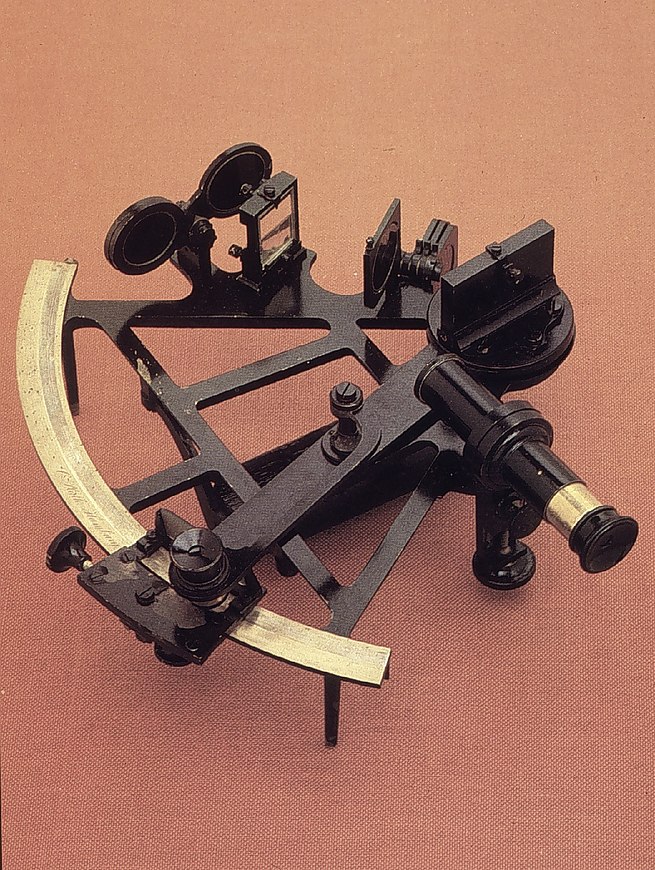
Main Difference
The main difference between Sextant and Astrolabe is that the Sextant is a angle measurement instrument and Astrolabe is a astronomical instrument.
-
Sextant
A sextant is a doubly reflecting navigation instrument that measures the angular distance between two visible objects. The primary use of a sextant is to measure the angle between an astronomical object and the horizon for the purposes of celestial navigation. The estimation of this angle, the altitude, is known as sighting or shooting the object, or taking a sight. The angle, and the time when it was measured, can be used to calculate a position line on a nautical or aeronautical chart—for example, sighting the Sun at noon or Polaris at night (in the Northern Hemisphere) to estimate latitude. Sighting the height of a landmark can give a measure of distance off and, held horizontally, a sextant can measure angles between objects for a position on a chart. A sextant can also be used to measure the lunar distance between the moon and another celestial object (such as a star or planet) in order to determine Greenwich Mean Time and hence longitude. The principle of the instrument was first implemented around 1731 by John Hadley (1682–1744) and Thomas Godfrey (1704–1749), but it was also found later in the unpublished writings of Isaac Newton (1643–1727). Additional links can be found to Bartholomew Gosnold (1571–1607) indicating that the use of a sextant for nautical navigation predates Hadley’s implementation. In 1922, it was modified for aeronautical navigation by Portuguese navigator and naval officer Gago Coutinho.
-
Astrolabe
An astrolabe (Ancient Greek: ἀστρολάβος astrolabos; Arabic: ٱلأَسْطُرلاب al-Asturlāb; Persian: اِستاره یاب Astaara yab) is an elaborate inclinometer, historically used by astronomers and navigators to measure the altitude above the horizon of a celestial body, day or night. It can be used to identify stars or planets, to determine local latitude given local time (and vice versa), to survey, or to triangulate. It was used in classical antiquity, the Islamic Golden Age, the European Middle Ages and the Age of Discovery for all these purposes.
The astrolabe’s importance not only comes from the early development of astronomy, but is also effective for determining latitude on land or calm seas. Although it is less reliable on the heaving deck of a ship in rough seas, the mariner’s astrolabe was developed to solve that problem.
-
Sextant (noun)
A navigational device for deriving angular distances between objects so as to determine latitude and longitude.
-
Sextant (noun)
One sixth of a circle or disc; a sector with an angle of 60°.
-
Sextant (noun)
One of six groups of adjacent teeth, excluding the wisdom teeth. The front sextants go from canine to canine, and there are sextants on the right and left of these. See w:Periodontal examination.
-
Astrolabe (noun)
An astronomical and navigational instrument for gauging the altitude of the Sun and stars.
-
Sextant (noun)
an instrument with a graduated arc of 60° and a sighting mechanism, used for measuring the angular distances between objects and especially for taking altitudes in navigation and surveying.
